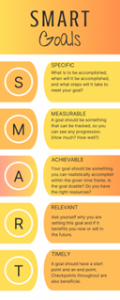By. Shaylin Boling
Physical activity is essential for maintaining good health and well-being. However, many individuals face barriers that hinder their ability to engage in regular exercise. These barriers can range from personal obstacles to environmental challenges. There are many different barriers one may face, and in this blog we will go over four common barriers.
Lack of Time is one of the most common barriers to physical activity. Many people lead busy lives with work, school, family responsibilities, and other commitments that leave little room for exercise. However, finding time for physical activity is possible with proper planning and prioritization.
- Schedule exercise sessions: Treat exercise like any other appointment and schedule it into your day. Just 30 minutes a day, 5 days a week to reach the physical activity guidelines (How much physical activity do adults need?, 2022).
- Look for opportunities to squeeze in physical activity throughout the day, such as parking farther from your destination so you can walk, take the stairs, and walk or stretch while talking on the phone instead of sitting, if possible. Short bouts of even 10 minutes have been shown to be effective.
- Think about the type of physical activity you are doing. The higher the intensity you work out at, the less time needed.
Lack of Motivation is another common barrier to physical activity. It can be challenging to find the drive to exercise, especially when faced with competing priorities or feelings of fatigue (Overcoming barriers to physical activity, 2022).
- Establish SMART’s goals: specific, measurable, achievable, relevant, and time bound. It is important to have a few short term goals that you can reach quicker, and one-two long term goals.
- Find activities you enjoy: Choose activities that you find enjoyable. It has been proven that the more you like an activity, the more likely you are to continue doing it.
- Buddy up: Exercise with a friend or family member for added accountability and support. Having a workout buddy can make exercise more enjoyable and help you stay motivated.
Financial Barriers can also prevent individuals from engaging in physical activity, particularly when it comes to gym memberships, fitness classes, or equipment purchases. However, there are plenty of affordable or free options available.
- Explore free resources: Take advantage of free workout videos online (TikTok, YouTube, Facebook, etc..), outdoor activities like hiking or jogging, or community programs that may offer low-cost opportunities.
- Get creative with equipment: You don’t need fancy gym equipment to get a good workout. Use household items like water bottles as weights or try bodyweight exercises that require no equipment at all.
Physical Limitations, whether due to injury, disability, age, or chronic health conditions, can present significant barriers to physical activity. However, it’s still possible to find ways to stay active within your capabilities.
- Consult with a healthcare professional: Before starting any exercise program, consult with your healthcare provider to ensure it’s safe and appropriate for your individual needs.
- Adapt activities: Modify exercises to accommodate physical limitations. For example, if you have knee problems, opt for low-impact activities like swimming or cycling.
- Focus on what you can do: Instead of dwelling on limitations, focus on finding activities that you can safely and comfortably participate in. There are countless options available, regardless of your physical abilities.
Overcoming barriers to physical activity requires determination, creativity, and a willingness to prioritize health and well-being. By identifying and addressing the obstacles that stand in your way, you can take meaningful steps towards leading a more active and fulfilling lifestyle. You now have a few ways that you can work to overcome your personal barriers, now it’s time to make it happen and reap those health benefits (Mayo Clinic, 2021).
References:
Centers for Disease Control and Prevention. (2021). Overcoming Barriers to Physical Activity. https://www.cdc.gov/physicalactivity/basics/adding-pa/barriers.html
Centers for Disease Control and Prevention. (2022a, June 2). How much physical activity do adults need?. Centers for Disease Control and Prevention. https://www.cdc.gov/physicalactivity/basics/adults/index.htm
Mayo Clinic. (2021). Exercise: 7 benefits of regular physical activity. https://www.mayoclinic.org/healthy-lifestyle/fitness/in-depth/exercise/art-20048389
